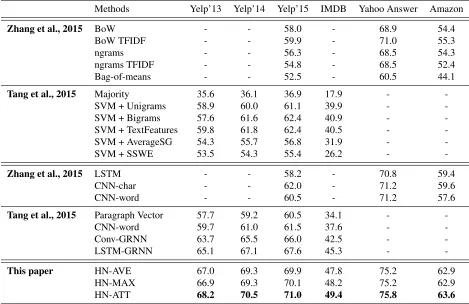Hierarchical Attention Networks for Document Classification
Full text
Figure




Related documents
Keeping these things in consideration proposed system is less with multiple methodologies which can be used in traffic control system It is important to know the road
designed DTSA has been optimized in the array environment in HFSS using unit cell model, as shown in Figure 6(a), for the desired specifications mentioned previously.. The
Finally the goal will be to optimize the whole facility (irradiation versus acquisition time, on-line spectrum analysis for the characterization of the fissile isotopes involved
We present here extensive DFT calculations of the free energy of hexagonal-close- packed (h.c.p.) iron under Earth’s core conditions, which we have used to obtain results for a
Figure 1.1 DPPH free radical scavenging activity of caffeic acid and Moringa oleifera extract. Solutions were prepared at 1mM and 2mM
A Monthly Double-Blind Peer Reviewed Refereed Open Access International e-Journal - Included in the International Serial Directories.. Page | 102 ARE CHILDREN MORE INTELLIGENT
The simulation setup and results are split into two sections; one describes the effects of including non-equilibrium modeling on optical calculations and the other,
Previous experience and practice in information literacy skills were a necessary prerequisite to have achieved knowledge of and familiari- ty with credible sources and